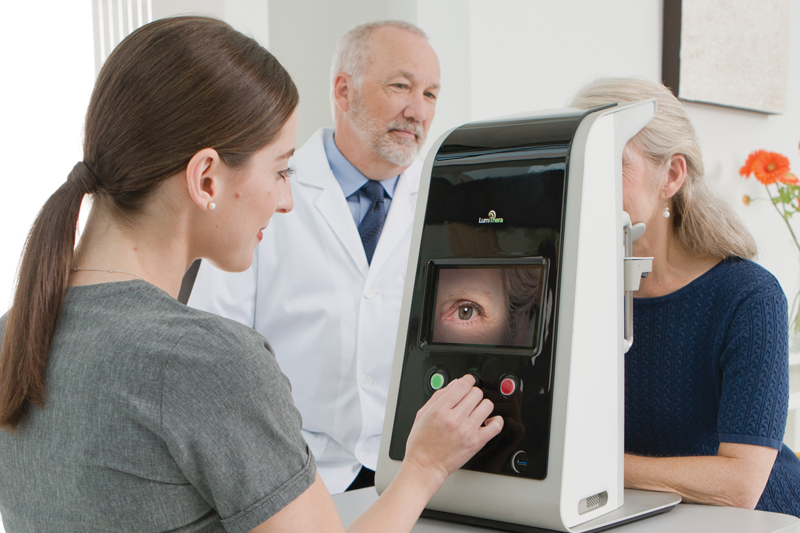LIGHTSITE I CLINICAL TRIAL
The LIGHTSITE I study is the first prospective, sham controlled, double-masked clinical study to evaluate the effectiveness of photobiomodulation (PBM) treatment in patients with dry age-related macular degeneration (AMD). The study included 46 eyes and subject participation lasted 12 months. Results from the LIGHTSITE I study showed clinical improvements in visual and anatomical outcome measures following multi-wavelength PBM. Improvements were observed in Best-Corrected Visual Acuity (BCVA) and Contrast Sensitivity (CS) in addition to improvements in pathological hallmarks such as Central Drusen Volume (CDV). These data provide a strong foundation for the utility of PBM therapy and demonstrate disease-modifying effects.
The PBM therapy (three treatments per week for three weeks) was most beneficial in dry AMD patients immediately following the completion of the treatment sessions highlighting a need for follow-up maintenance therapy. Retreatments at a six-month interval were performed to maintain clinical benefits.
No device-related adverse events were reported throughout the course of the study highlighting a favorable safety profile. The results demonstrate that the therapy is both a safe and effective treatment for early-stage dry AMD patients.
This foundational data will accelerate our learning to develop options to treat complicated degenerative eye diseases, where patient options are limited. The current trial results will be used to refine the upcoming multi-center clinical trials expected to start initially in Europe, and then in the US.
The 30-subject pilot study was partially funded from a Small Business Innovation Research (SBIR) grant awarded to the Company from the National Institute of Health and the National Eye Institute.
Caution: The Valeda® Light Delivery System is an Investigational Device. Use of Valeda is limited by Federal (or United States) law to investigational use.
Ongoing Clinical Trials
For information on the studies and their site locations can be found at www.clinicaltrials.gov.
LumiThera Financial Conflict of Interest Policy
COR-0015 REV A LumiThera Financial Conflict of Interest Policy
Caution: The Valeda® Light Delivery System is an Investigational Device. Use of Valeda is limited by Federal (or United States) law to investigational use.
Ongoing Clinical Trials
For information on the studies and their site locations can be found at www.clinicaltrials.gov.
LumiThera Financial Conflict of Interest Policy
COR-0015 REV A LumiThera Financial Conflict of Interest Policy
Caution: The Valeda® Light Delivery System is an Investigational Device. Use of Valeda is limited by Federal (or United States) law to investigational use.
Ongoing Clinical Trials
For information on the studies and their site locations can be found at www.clinicaltrials.gov.
LumiThera Financial Conflict of Interest Policy
COR-0015 REV A LumiThera Financial Conflict of Interest Policy
Ongoing Clinical Trials
For information on the studies and their site locations can be found at www.clinicaltrials.gov.
LumiThera Financial Conflict of Interest Policy
COR-0015 REV A LumiThera Financial Conflict of Interest Policy



